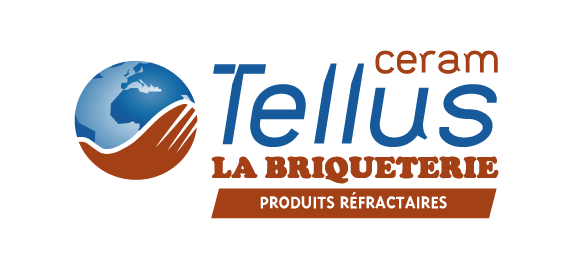Advices for the implementation of refractory dense castables by casting / vibration
TELLUS-CERAM's dense refractory castables are manufactured using carefully selected raw materials and under conditions that guarantee their quality.
Their performance will be good only if their implementation is carried out respecting essential conditions for the optimal development of their characteristics.
1 – CONSERVATION
TELLUS-CERAM's dense refractory castables, like all hydraulic castables, must be stored in a dry place. Under these conditions, they can be kept for at least 6 months without alteration.
Never use concrete if, at the opening of the bag, hard agglomerates are present.
2 - PREPARATION OF CASTABLE
In any case, use only very clean equipment.
Whenever possible, work with a whole number of bags, without adding anything other than the mixing water.
– Quality of the water
The mixing water must be clean and potable, and its temperature preferably between 15 and 25 ° C. In cold weather, however, it may be necessary to use warmer water, so that the temperature of the concrete / water mixture is at least 15 ° C.
– Amount of water
The amount of water to add is indicated on the packaging. To optimize it, practice the so-called "ball in hand" test, or better, vibrate a small amount of product.
Overdose of water should be avoided, especially for castables with low and very low cement content. These castables are apparently dry at rest, but the vibration makes them very mobile.
– Mixing
For mechanical mixing, use a mixer with vertical axis (forbid concrete mixer). Clean and moisten the mixer before starting work.
Before adding water, quickly mix the concrete by running the mixer for a few seconds to dry.
Then introduce three quarters of the necessary water, then gradually add the rest of the water until the desired consistency.
Mix for a long time, at least three minutes: mixing too short will require a higher water addition, adversely affecting the mechanical properties of the concrete.
3 - INSTALLATION OF CASTABLE
Molds and formwork must be carefully waterproofed (using grease, paraffin, polyethylene sheets, etc.) so that the castable can not be deprived locally of the water necessary for its hydraulic setting.
Castable must be poured and vibrated simultaneously, using external vibrators or vibrating needles.
It is not recommended to vibrate too much. The passage of the free surface of the concrete from a matt aspect to a shiny aspect indicates a maximum densification.
Avoid smoothing with a trowel.
The setting up of a mixer load must be completed 30 minutes after the end of mixing.
The heating must be carried out taking into account the thickness and volume of the castable to be treated, each lining being a special case.
- up to 600 ° C at a rate of 30 ° C / hour, respecting two stages of 6 hours at 150 and 400 ° C,
- above 600 ° C to 50 ° C / hour.

